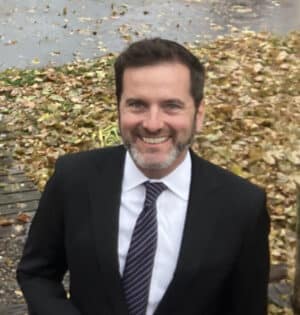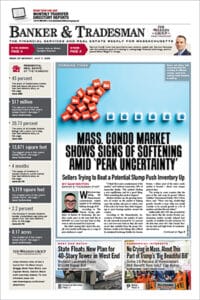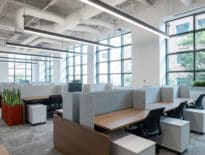Steven Farrell
Executive Director Fenway Community Development Corp.
Age: 52
Industry experience: 15 years
Steve Farrell took over leadership of Fenway Community Development Corp. this spring as the 51-year-old nonprofit housing agency expands its development and acquisition pipeline. In his previous role as chief operating officer of nonprofit MetroHousing|Boston, the Dorchester resident focused on policy, financial and fundraising activities. At Fenway CDC, Farrell joins an organization that is trying to buffer displacement and gentrification through acquisitions of existing properties and new development including a 24-unit apartment project seeking final approval at 112-114 Queensbury St.
Q: What was the demand for your most recently completed project, the Burbank Terrace apartments?
A: We had 3,500 lottery applicants for 22 units reserved for households earning 60 percent or less of area median income. It was 100 percent affordable. It’s safe to say the need for affordable housing is not being met at all. The best example we have is 43 Hemenway, where our acquisition is increasing the portfolio of [income-restricted home ownership] options in the neighborhood by 33 percent. What that says to me is there’s a shortage of folks who want to own. That’s a data point that shows what’s really at stake. It’s a neighborhood of 32,000 people.
Q: Heading into 2025 and a change of presidential administration, what do you expect for the funding climate for affordable housing developers?
A: The big picture is the federal budget wasn’t growing at all, and if we were lucky, we maintained HUD’s budget to keep pace with inflation. With the new administration, there are just a lot of unknowns when it comes to federal funding.
Q: Your organization and the Planning Office of Urban Affairs made a noteworthy acquisition – the Our Lady’s Guild House property – for $14 million in late 2023. What’s next for the roominghouse conversion approved this summer?
A: We are waiting to participate in the state’s next funding round [for affordable housing tax credits] in February, and we are very excited about the opportunity to create 80 homes for low-income folks in a prime spot: a corner of Kenmore Square where there aren’t many opportunities now. The inside has its late stage Art Deco chapel from the 1950s. I grew up Catholic so I’ve been in lots of old churches and parish halls, and it’s very reminiscent of that and a very important community space.
Q: How does this new position differ from your role at MetroHousing|Boston?
A: Real estate development is relatively new for me, but we are an affordable housing developer and we are primarily a community developer. We’re building community with our affordable housing, with our policy and advocacy work, and with our community organizing team. And we’re also doing it with the community programs with our services to the residents and our neighbors.

The Boston Zoning Board of Appeal approved Fenway CDC’s proposed 112 Queensbury development last week. It replaces a former laundromat with 24 affordable apartments. Image courtesy of Embarc Studios
Q: How does Fenway CDC find opportunities for acquisitions amid the competition from private developers?
A: We have 18 people on staff here at Fenway CDC in administration, financing, fundraising and community organizing. When it comes to having our eyes and ears on the ground in the neighborhood, we’re making connections. Property does change hands regularly in the neighborhood, and when the opportunity arises we are in the know. We have former board members who are helping out. All of the staff at Fenway CDC are engaged in all of the work at some point, whether they are community organizing or engaged in advocacy, private fundraising and raising the profile of the organization. We are supporting the real estate team to get projects that reflect the community’s desire, get those in front of the city and get those approved. Timing is everything. That’s why it’s very important that the pipeline that our team is working on be ready at the right time.
Q: How has the college off-campus housing population in the post-COVID era affected Fenway housing stock?
A: Any time a university increases its enrollment without increasing the number of beds it has – and it will have – an impact. The universities have been very engaged with their institutional master plans, and Berkeley will be updating their IMP in the next year or so, so we are involved in highlighting the challenges.
Farrell’s Five Favorite Back Bay and Fenway Public Parks
- Symphony Community Park
- Ramler Park
- Lyrik Plaza
- Victory Gardens
- Kelleher Rose Garden







